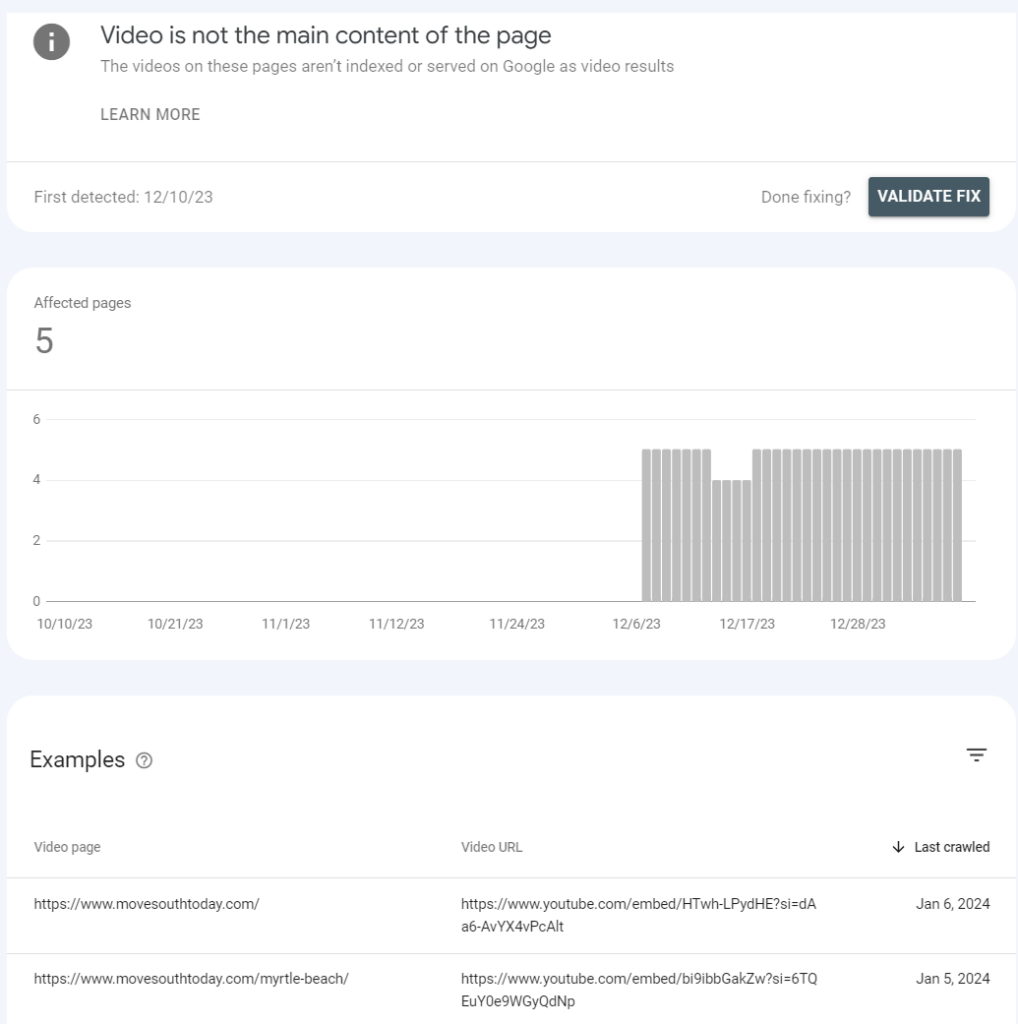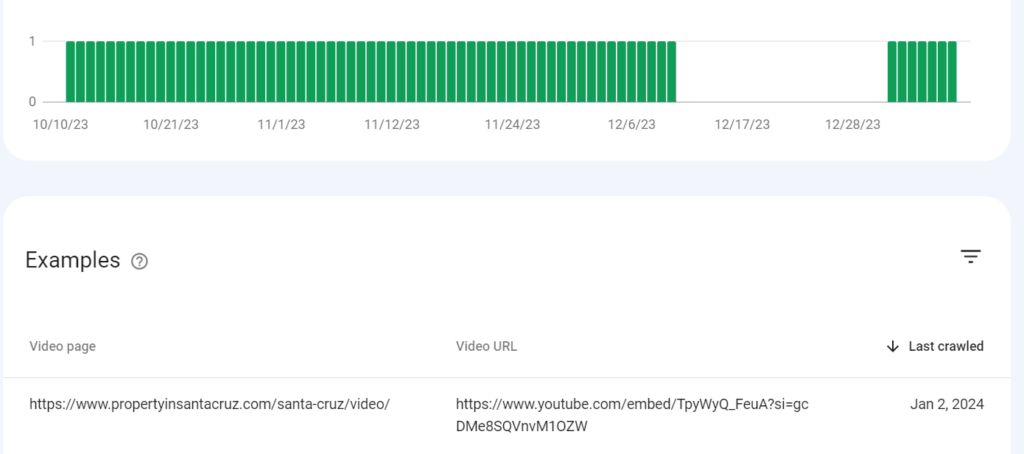Navigating the New Google Algorithm: Embedding Video as Main Content
How to fix Video is not the main content of the page?

In the dynamic world of Search Engine Optimization (SEO), staying ahead of Google’s algorithm updates is crucial for maintaining visibility and relevance. The latest update throws a curveball in video content strategy: Google’s expanded video mode guidelines and Google Search Console (GSC) reports are now emphasizing the importance of having an embedded video as the main content of a page.
Understanding the Change
GSC’s new alerts, such as “Video is not the main content of the page,” highlight this shift. I’ve delved into this new development and noticed a peculiar yet fascinating behavior in how videos are categorized as main content.
The Key Discovery
Through extensive research, I found that the placement of the term “video” plays a pivotal role. Let’s consider two separate pages, each with an embedded YouTube video in the rendered area. On one page, the video is recognized as the main content, while on the other, it’s flagged for not being the main content.
The distinguishing factor? The presence of the word “video” in both the title and the URL of the page that successfully marked the video as the main content.
Supporting Data
Further analysis of indexed video pages corroborated this pattern. Pages with “video” in their title and URL slug consistently appeared in reports, indicating their recognition as containing main video content.
Testing the Theory
To validate these findings, I conducted a series of tests:
- Scenario 1:
- Conditions: “Video” in both title and URL, no age restriction.
- Result: Video is considered as the main content.
- Scenario 2:
- Conditions: “Video” in title but not in URL, no age restriction.
- Result: Video is not considered as the main content.
- Scenario 3:
- Conditions: “Video” in both title and URL, with an age restriction.
- Result: Video is not considered as the main content.
These scenarios demonstrate a clear pattern and can serve as a guide for those encountering similar issues.
As you can see here that if the URL has Video and the title has the word video it does get indexed:

Implications for SEO Strategies
This discovery has significant implications for SEO strategies:
- Keyword Placement: The importance of including relevant keywords in both the title and URL of the page is reinforced, especially for video content.
- Age Restrictions: Videos with age restrictions may not be considered as main content, affecting their visibility and SEO value.
- Content Structuring: Ensuring that your video is the centerpiece of your page’s content is crucial. This goes beyond keyword placement and involves the overall design and structure of your page.
Practical Application
For SEO professionals and content creators, adapting to this update involves:
- Revising Titles and URLs: Audit your existing video content and modify titles and URLs to include the keyword “video” where relevant.
- Content Planning: When planning new content, consider the role of video and its placement in your overall content strategy.
- Testing and Reporting: Regularly test different scenarios and keep up with GSC reports to stay ahead of any further changes.
As Google continues to evolve its algorithms, staying informed and adaptable is key. The integration of video as a central element of web content reflects the growing importance of multimedia in user engagement and SEO. By understanding and leveraging these changes, Personal SEO can ensure their content not only complies with Google’s guidelines but also stands out in an increasingly competitive digital landscape. Thank you for reading: How to fix video is not the main content of the page. If you have any SEO questions or would like a free audit please contact us